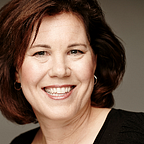The Secret to Letting Go of Your Story
I was speaking with a writer this week who could see the light at the end of the tunnel on her novel. She was almost done — and she was terrified. She could feel herself panicking and turning to other shiny new ideas — anything that wasn’t this almost-done idea.
Being done would mean that her work could be rejected.
Being done would mean that her work could be judged.
Being done would mean that her limitations and weaknesses as a writer would be on display for everyone to see.
Being done would mean that whatever she had on the page was as good as she was able to do, even if it wasn’t anywhere close to the perfect story in her mind.
Being done would mean that she would be exposed.
This writer asked what she could do to confront these painful and scary feelings. What popped into my mind was a book about dance.
I read this book years ago. It’s a collection of essays from the New Yorker dance critic Joan Acocella called Twenty-eight Artists and Two Saints. The jacket copy calls it “an indispensable reading on the making of art — and the courage, perseverance, and, sometimes, dumb luck that it requires.” It’s one of those books that has stuck with me for a long time; it embedded itself in my brain and will never leave.
Acocella writes about making food and photography and paintings and books, but she primarily writes about dance — about Jerome Robbins and Mikhail Baryshnikov and Susan Farrell and Martha Graham. This is what I learned from her: that dance happens in one moment in real time. A person moves their body through time and space, and the people who are in the room where it happens experience that movement. But even if viewed later on film, the film captures one moment in time. It’s clear that it’s something that happened, and then didn’t exist anymore. It’s like music in that way — played, and then done. Completely ephemeral.
This struck me because it is so completely opposite of writing book — a work that is usually developed over many years. Any given book could have a passage that was written one year ago or five years ago or ten years ago. To the writer, it feels as though it represents your entire life. It feels as if this is your one chance to pin to the page everything you think and know and feel and believe.
I am here to tell you that it’s not.
Art thrives within boundaries. Just like sports that follow a set of rules that all players agree to, art makes sense because of the restrictions we impose on it. For writers, one of those restrictions is that a book contains a certain number of pages bound between covers and another is that there is a moment — like the opening night of a play or the moment of a dance — when the writer lifts her hands off the keyboard and stops.
Be grateful for that boundary. Let your book go — and then set about working on the next one.
You can look back at your book and know that this is what you thought and knew and felt and believed at that one moment in time. It was the best you could do at that moment in time.
And if later in your life you have other ideas, and write other books, and your skill has increased and your knowledge of yourself and the world has increased, and you write a better book, then the first book will serve as a touchstone for your trajectory as a creator.
You will love that first book for who you were when you wrote it. You will love it for its beauty and its limitations and for the fact that, despite all the obstacles and all the doubts, you did it.
